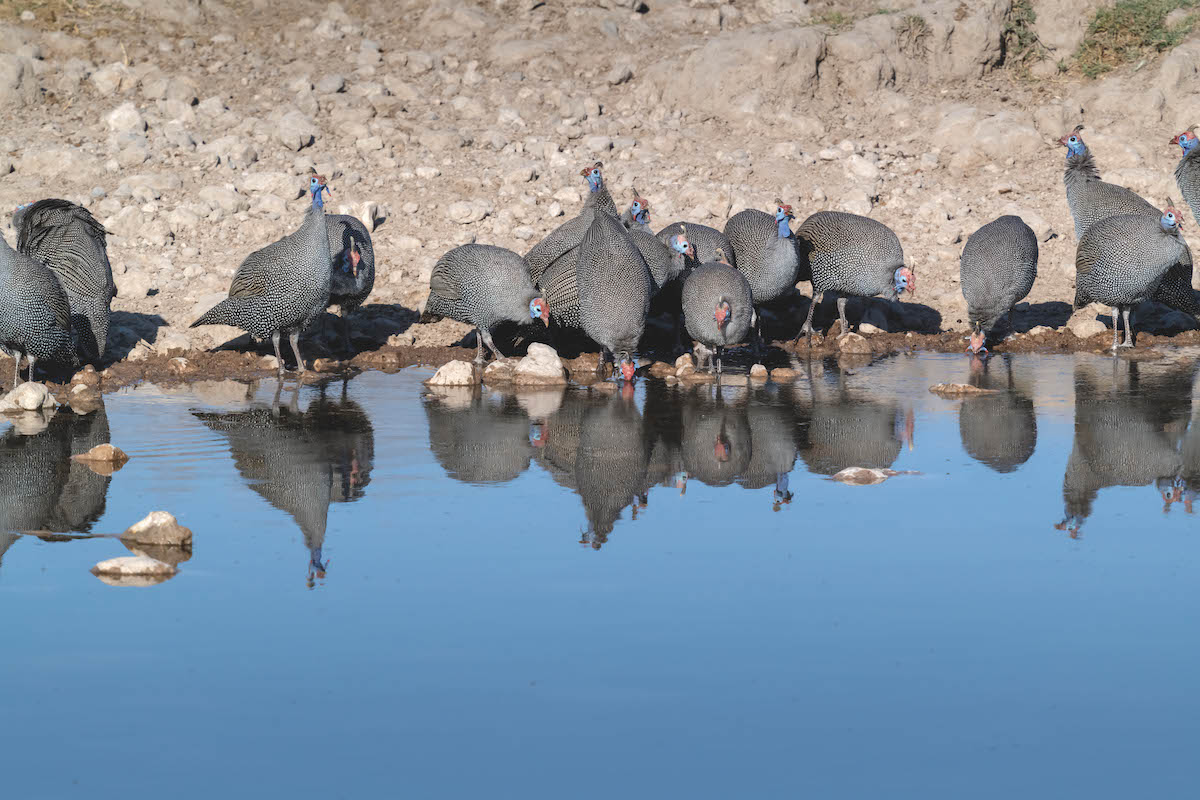A sporting life in Africa
Aidan Hartley hopes a visit from the Coconut Man will help find new water sources for the farm

Guineafowl and other wildlife have been making full use of the water pools on Aidan Hartley's land
The Coconut Man came to the farm today. I suppose he’s a hydrogeologist but people in the district call him the Coconut Man because he has a special way of finding water. Before going out he has to shower and take his shoes off. Then he sets off barefoot across the African bush with an empty coconut shell held aloft in his right hand – and by this curious divining method he has become renowned for finding good boreholes. Today he left the coconut behind, to my disappointment, and instead he carried a box with some sort of seismic instrument in it.
Small fortune
Across our 2,500 acres he found little of excitement, though he did settle on a spot high on the plains, where he estimated there might be an aquifer at 880ft with a flow of up to 900 gallons an hour. Until we spend a small fortune, we cannot know if this is real, or if it is sweet. But a borehole up there might be ideal for our cattle and the wildlife to drink. Over the past 20 years we’ve been on the farm, we have excavated only one dam of about two acres, along with plenty of hafirs, or small earth dams, and swales. This has encouraged the animals and birds and this week I enjoyed watching flocks of guineafowl with their chicks drinking at the pools of water we have made.
We are very lucky to have two dozen springs on the land, some of them bubbling up with 2,000 gallons of water each day. Even in the worst droughts, such as the three-year one we just survived, these springs always seem to flow as strongly as in the wet. The springs are a bountiful source of water for the livestock and wildlife and from the best source. We pump water up to the farmstead for household use – though we only ever drink or cook with rainwater collected off our kitchen’s tin roof.
I had hoped the Coconut Man would find a huge aquifer of sweet water that we could pump to irrigate our small plantation of macadamia nut trees and avocados. I figured a few acres of nuts and fruit would generate enough revenue to allow us to leave the rest of the ranch as bush for the animals, but it looks as if the trees will have to survive on the twoacre dam and we will not be expanding. With around 24in of annual rainfall, we are never going to be able to stock many more cattle than the 300 head we already graze on the place.
In my family, water stories become legends. During the 1950s, my parents set up a cattle ranch on the western slopes of Kilimanjaro. The only permanent water was the Ngare Nanyuki, a red river that flowed off the volcanic crater of Meru. This had such a high concentration of fluoride that it was dangerous even for the cattle to drink there too often. My father set about drilling a borehole at the foot of a hill. An elderly Afrikaner who had been in the district since 1904 said, “I tell you, Mr Hartley. You will never find water here.” My parents were hard-up for cash after settling the ranch and every foot the drill went was another painful addition to the overdraft.
At 130ft, no water. At 320ft, no water. The drill went down through the guts of Kilimanjaro’s volcanic rocks. At 400ft, Dad said they had failed, but Mum urged, “One more week – please go to 500ft.” The old Afrikaner said, “I told you British. No water here.” Even if they found water, everybody said it would be brackish like the red river Nanyuki. At 460ft, Dad announced they were now broke. No money and no water.
But they went on, day after day, until at over 500ft there was an enormous geyser of water that spouted high into the air and splashed down across the land like a flash flood. It gushed at 1,500 gallons an hour. The geyser settled down to a flow of 1,100 gallons an hour and the water, which was both fresh and pure, helped build my family’s ranch.








